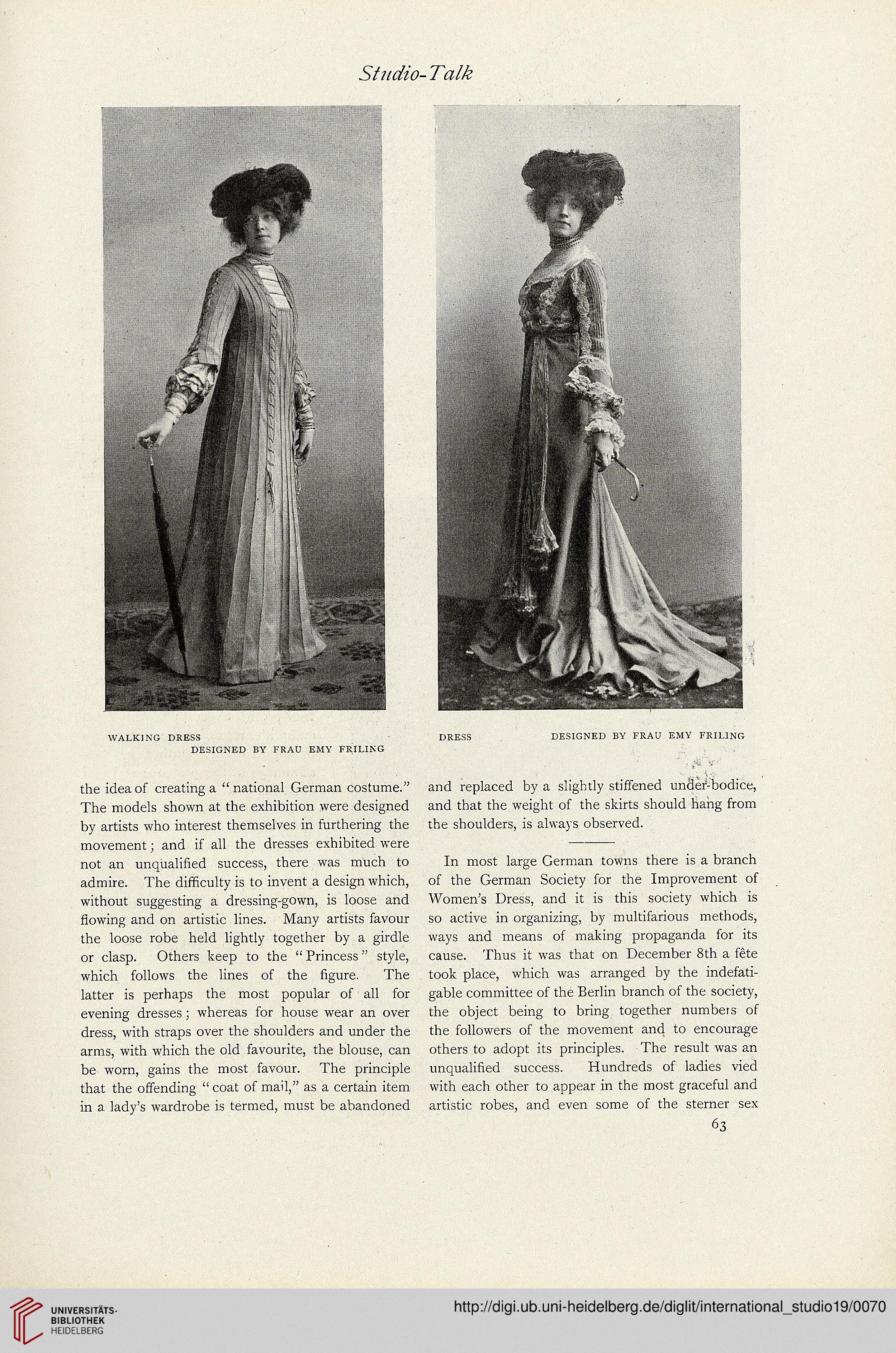57//oV<?- 7/z//&
WALKtXGDRESS
DEStGNED BY FRAU EMY FRtLtKG
the idea of crea.ting a " nationai German costume."
The models shown at the exhibition were designed
by artists who interest themseives in furthering the
movement; and if ali the dresses exhibited were
not an unquaiified success, there was much to
admire. The difHculty is to invent a design which,
without suggesting a dressing-gown, is loose and
Howing and on artistic lines. Many artists favour
the ioose robe heid lightty together by a girdie
or ciasp. Others keep to the " Princess " style,
which foliows the lines of the frgure. The
iatter is perhaps the most popuiar of all for
evening dresses; whereas for house wear an over
dress, with straps over the shouiders and under the
arms, with which the oid favourite, the biouse, can
be worn, gains the most favour. The principie
that the offending " coat of maii," as a certain itern
in a iady's wardrobe is termed, rnust be abandoned
DRESS DESIGNED BY FRAU EMY FRtHNG
and repiaced by a slightly stiffened under-bodice,
and that the weight of the skirts shouid hang from
the shoulders, is always observed.
In most large Gerrnan towns there is a branch
of the German Society for the Improvement of
Women's Dress, and it is this society which is
so active in organizing, by muitifarious methods,
ways and means of making propaganda for its
cause. Thus it was that on December 8th a fete
took place, which was arranged by the indefati-
gable committee of the Beriin branch of the society,
the object being to bring together numbets of
the foiiowers of the movement and to encourage
others to adopt its principies. The result was an
unquaiifred success. Hundreds of iadies vied
with each other to appear in the most graceful and
artistic robes, and even some of the sterner sex
63
WALKtXGDRESS
DEStGNED BY FRAU EMY FRtLtKG
the idea of crea.ting a " nationai German costume."
The models shown at the exhibition were designed
by artists who interest themseives in furthering the
movement; and if ali the dresses exhibited were
not an unquaiified success, there was much to
admire. The difHculty is to invent a design which,
without suggesting a dressing-gown, is loose and
Howing and on artistic lines. Many artists favour
the ioose robe heid lightty together by a girdie
or ciasp. Others keep to the " Princess " style,
which foliows the lines of the frgure. The
iatter is perhaps the most popuiar of all for
evening dresses; whereas for house wear an over
dress, with straps over the shouiders and under the
arms, with which the oid favourite, the biouse, can
be worn, gains the most favour. The principie
that the offending " coat of maii," as a certain itern
in a iady's wardrobe is termed, rnust be abandoned
DRESS DESIGNED BY FRAU EMY FRtHNG
and repiaced by a slightly stiffened under-bodice,
and that the weight of the skirts shouid hang from
the shoulders, is always observed.
In most large Gerrnan towns there is a branch
of the German Society for the Improvement of
Women's Dress, and it is this society which is
so active in organizing, by muitifarious methods,
ways and means of making propaganda for its
cause. Thus it was that on December 8th a fete
took place, which was arranged by the indefati-
gable committee of the Beriin branch of the society,
the object being to bring together numbets of
the foiiowers of the movement and to encourage
others to adopt its principies. The result was an
unquaiifred success. Hundreds of iadies vied
with each other to appear in the most graceful and
artistic robes, and even some of the sterner sex
63




